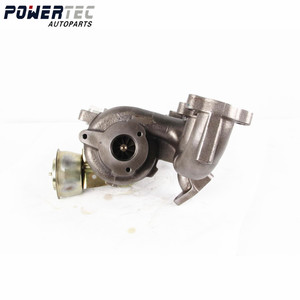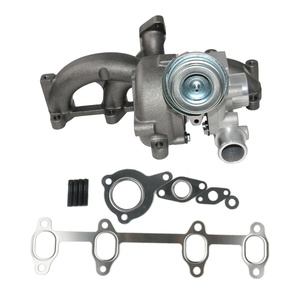(132 products available)














































































































































































ASV Turbo is a common equipment used in many vehicles. It helps in efficient combustion of fuel, which in turn gives more power to the engine. The ASV turbo is also known as Turbocharger. It is a forced induction device that increases the overall power of an engine. The ASV turbo draws air from the atmosphere and forces it into the cylinders of the engine. This results in more power generation. The ASV Turbo comes in different types.
Single Turbo
Single turbo is by far the most popular type of turbo found in modern vehicles. The single turbo is connected to the exhaust system and helps in boosting the power of the engine. The single turbo is available in different sizes. Each of the sizes works effectively in different applications. The single turbo is suitable for small and large power gains.
Twin Turbo
Twin turbo is another type of ASV turbo. As the name suggests, the twin turbo consists of two turbines. The two turbines can either be small or large. If they are small, they will be similar in size to the single turbo. The two turbines work together to compress the air and supply it to the engine's cylinders. The first turbine begins to spool when the engine is idling, and the second turbine spools when the engine reaches its higher RPM. This means that the two turbines work in stages.
Variable Geometry Turbocharger (VGT)
Variable Geometry Turbocharger (VGT) is another type of ASV turbo. The VGT is designed to improve the performance of an engine. It reduces turbo lag and maximizes boost pressure. The VGT is commonly found in diesel engines.
Electric Turbocharger
The Electric turbo is a new technology in the world of auto mechanics. The electric turbo uses batteries to power the turbine. The electric turbo eliminates turbo lag and offers instant boost.
ASV TURBO is a well-known brand in the turbocharger industry. The brand offers several models of turbos, each with its specifications depending on the needs of different customers. Here are some general specs of ASV turbo that buyers should be aware of:
ASV Turbo Size:
The size of the ASV turbo affects the engine's performance. A larger turbo sucks in more air and forces it into the engine, resulting in more power. Conversely, a smaller ASV turbo will spool quickly, providing boost at lower engine RPMs. As a result, the vehicle will experience little or no turbo lag. ASV turbos are available in different sizes, ranging from small to large.
ASV Turbo Pressure Ratio:
When buying an ASV turbo, consider the pressure ratio. The pressure ratio is the amount of pressure the turbo generates in the intake manifold compared to the atmospheric pressure. A higher pressure ratio means the turbo can force more air into the engine. As a result, the engine will burn more fuel, leading to increased power output.
ASV Turbo Trim:
The trim of an ASV turbo determines the size of the turbine and compressor wheels. A higher trim number means the wheels are larger. As a result, the turbo can move more air, generating more power. However, a higher trim can cause the turbo to work harder, leading to increased wear and tear. Conversely, a lower trim on the ASV turbo can lead to turbo lag.
ASV Turbo Boost Control:
All ASV turbo models have boost control features. Boost control regulates the amount of pressure the turbo generates in the intake manifold. With a boost controller, the driver can adjust the boost level manually. As a result, it's possible to achieve more power from the engine, especially when driving in sports mode.
ASV Turbo Wastegate:
ASV turbos have an inbuilt wastegate. The wastegate is a valve that controls the flow of exhaust gas through the turbine. When the wastegate is closed, all exhaust gases flow through the turbine, generating maximum boost. The wastegate opens when the desired boost level is reached, diverting some exhaust gases away from the turbine. A wastegate ensures the turbo doesn't overboost.
Maintaining the ASV turbo is crucial for optimal performance and durability. Here are some general maintenance tips:
When choosing an ASV turbo, consider the following:
In most cases, the replacement of the asv turbo valve is done by a qualified mechanic. However, it is possible to replace the valve by following the right steps. Before starting the replacement process, it's necessary to have the right tools for the job. Below is a simple guide on how to replace the asv turbo valve.
Tools needed:
Step-by-step guide
Q1. How can one tell if a turbo needs replacing?
A1. There are several signs that indicate a turbo replacement is necessary. These include a significant drop in engine performance, excessive exhaust smoke, a wheezing noise from the turbo, and an oil leak. It's worth noting that these symptoms can also be caused by other issues in the engine system. Therefore, conducting a diagnosis to confirm the turbo as the problem is advisable before replacing it.
Q2. Is it possible to drive with a faulty turbo?
A2. Technically, one can drive with a faulty turbo. However, it is not recommended. A faulty turbo can lead to increased fuel consumption, which places a strain on the finances. It can also cause damage to other components of the engine, potentially leading to more costly repairs. Furthermore, a faulty turbo may compromise the car's performance, making it sluggish and unresponsive.
Q3. Can a turbo last 200000 miles?
A3. Yes, a turbo can last 200,000 miles. However, this is only achievable with proper maintenance and care. Factors such as driving habits and the quality of engine oil used also influence the lifespan of a turbo.
Q4. What is the average time taken to replace a turbo?
A4. The duration of a turbo replacement depends on various factors. These include the make and model of the car, the condition of the old turbo, and the experience of the mechanic. Generally, a turbo replacement can take anywhere from 3 to 8 hours.